Here is a great case we had where fish x-rays provided excellent diagnostic value. We prefer to use x-rays, also known as radiographs, to assess buoyancy disorders in all fish.
A few months ago, we first met Huxley and Darwin. They are both moor goldfish with big, bulging eyes and short, stubby bodies. Huxley is red and Darwin is black. When they first presented, Darwin had a growth on his dorsal fin and Huxley was on his belly at the bottom of the tank. A quick water test reveled that their water had a low pH, high ammonia and very low kH (alkalinity). This is commonly referred to as Old Tank Syndrome. Usually caused by a lack of maintenance, this case was compounded by the source water with a low kH as well. Darwin had the mass along his fin removed and changes to the maintenance procedure were made.
A few months later, Huxley (red moor) presented for lying on his side, a change from his belly-sitting behavior previously. Knowing the issues fancy goldfish can suffer with their anatomy, Huxley’s owner brought him to Westside Animal Hospital in Santa Cruz, CA who we partner with to perform radiographs, also known as x-rays. To perform radiographs on fish, they are sedated using a water-soluble drug, then picked up out of the water and positioned on a plastic sheet on the radiograph table. We use plastic bags and bubble wrap to make little slings to keep them straight up and down. They are only out of the water for approximately 20-30 seconds and then returned to the sedation water while the radiographs process. Here is what we found for little Huxley…
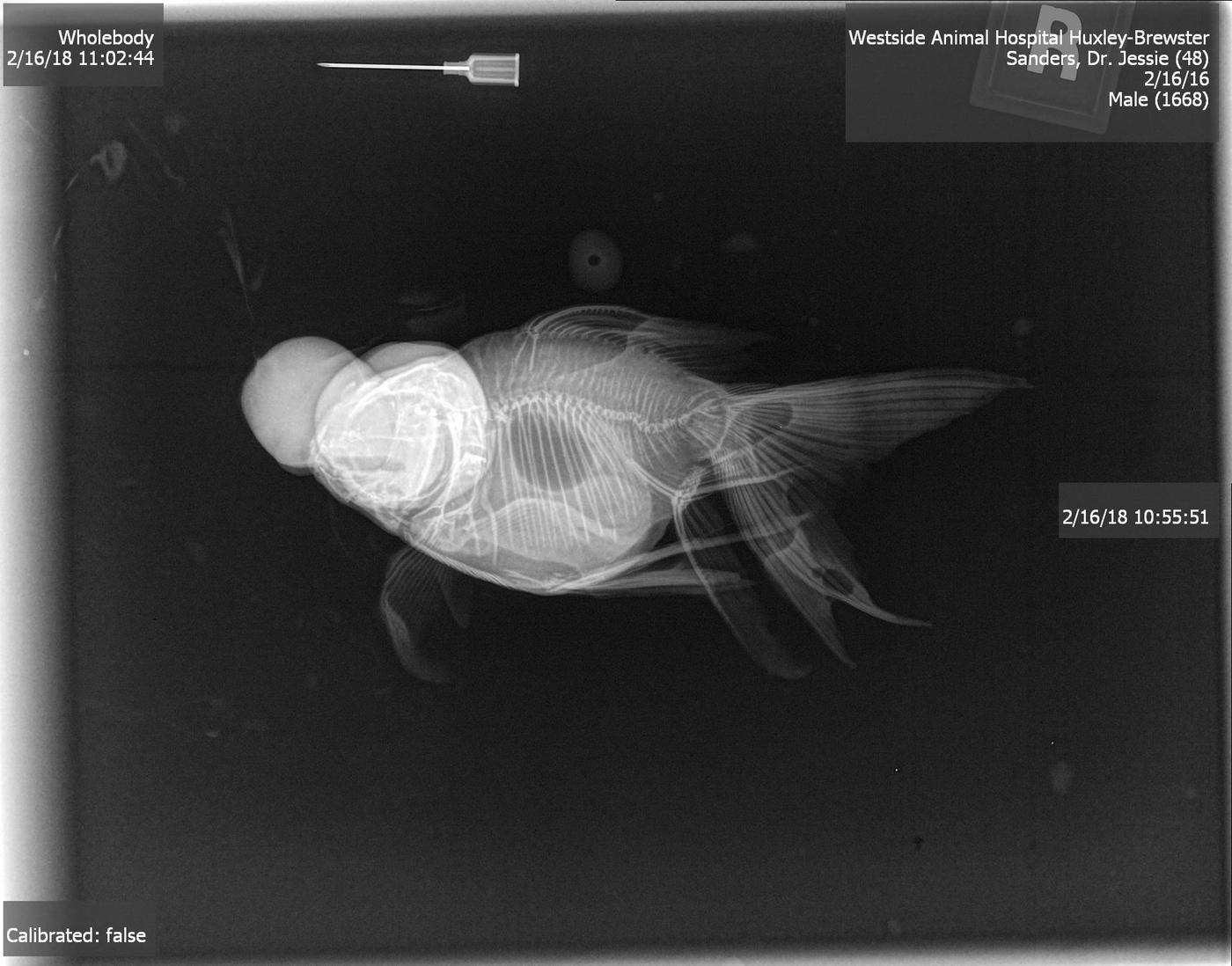
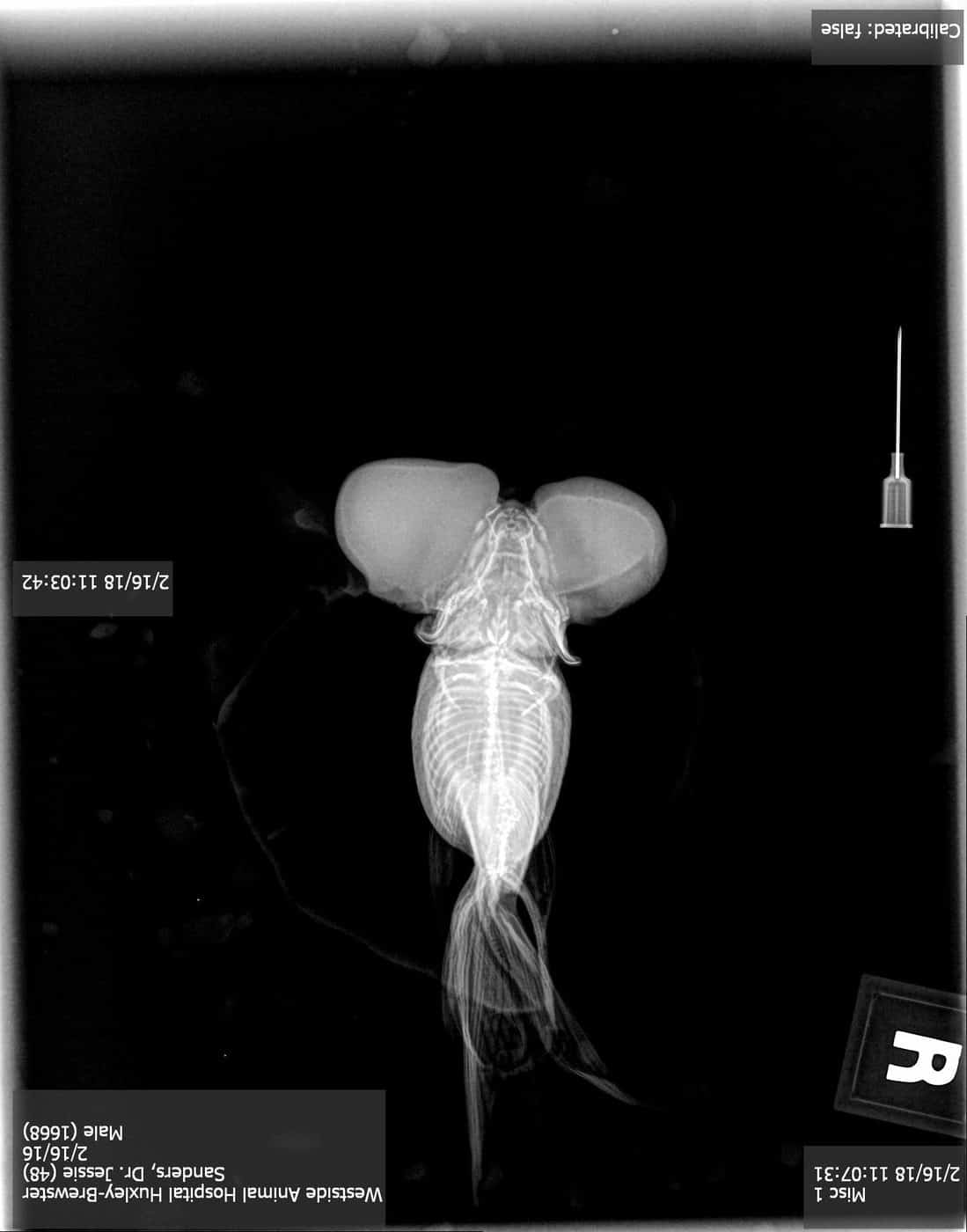
There’s a lot going on in these radiographs, and can be very confusing for those of us who have never seen an animal radiograph before, let alone one of a fish. Here are some more fancy goldfish for reference…
Fancy Goldfish X-Rays
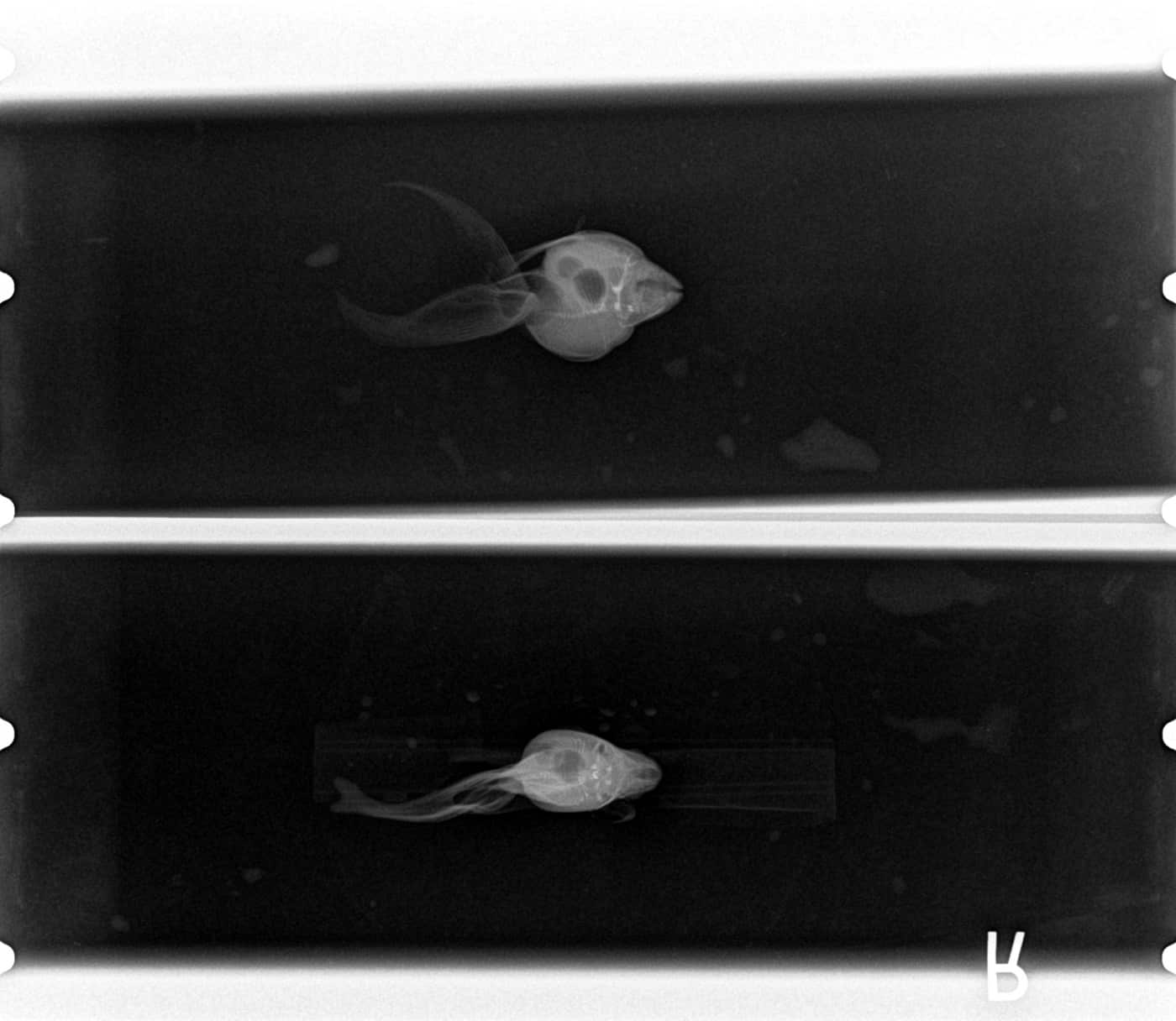
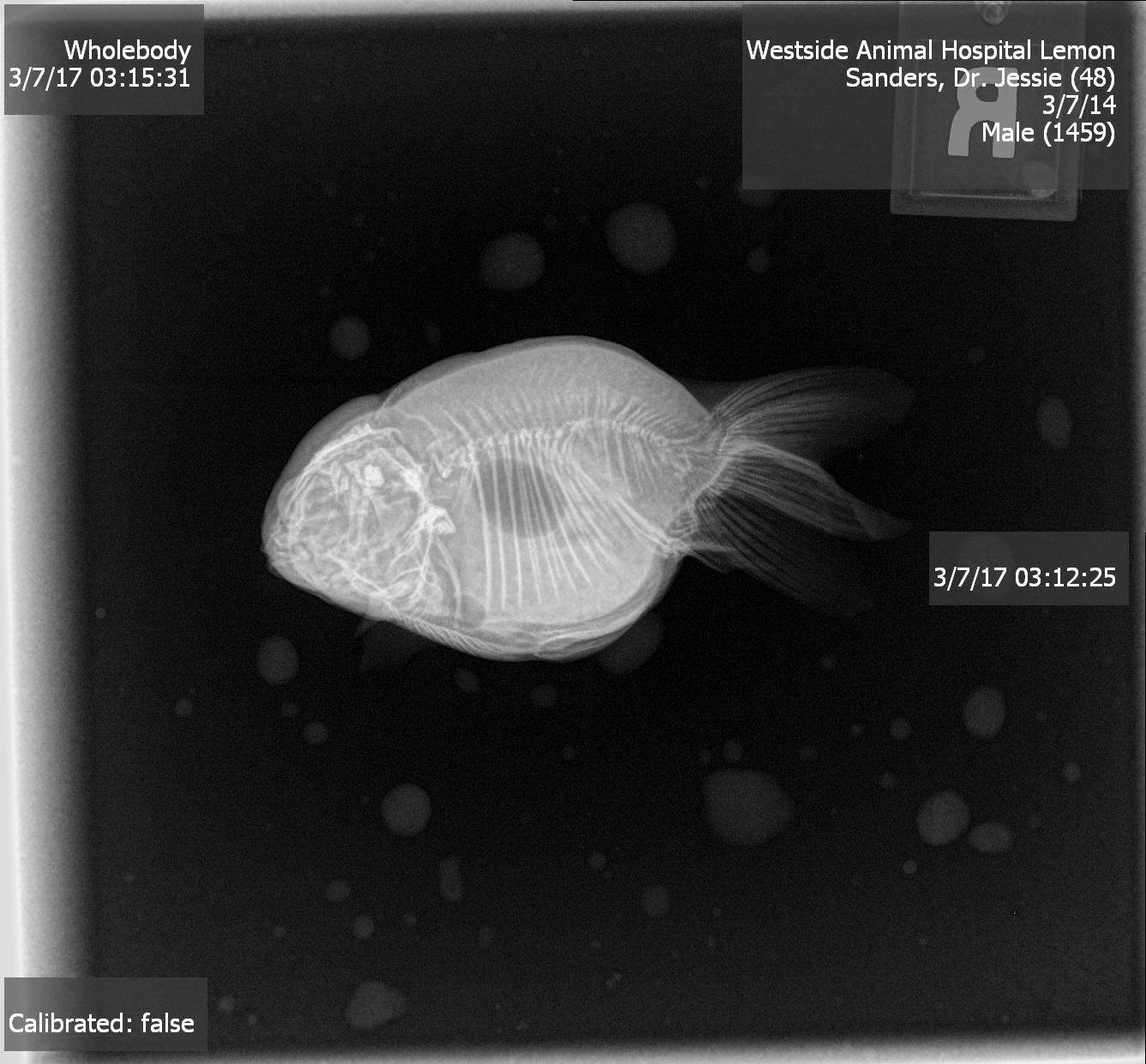
And here’s a comet goldfish for comparison…
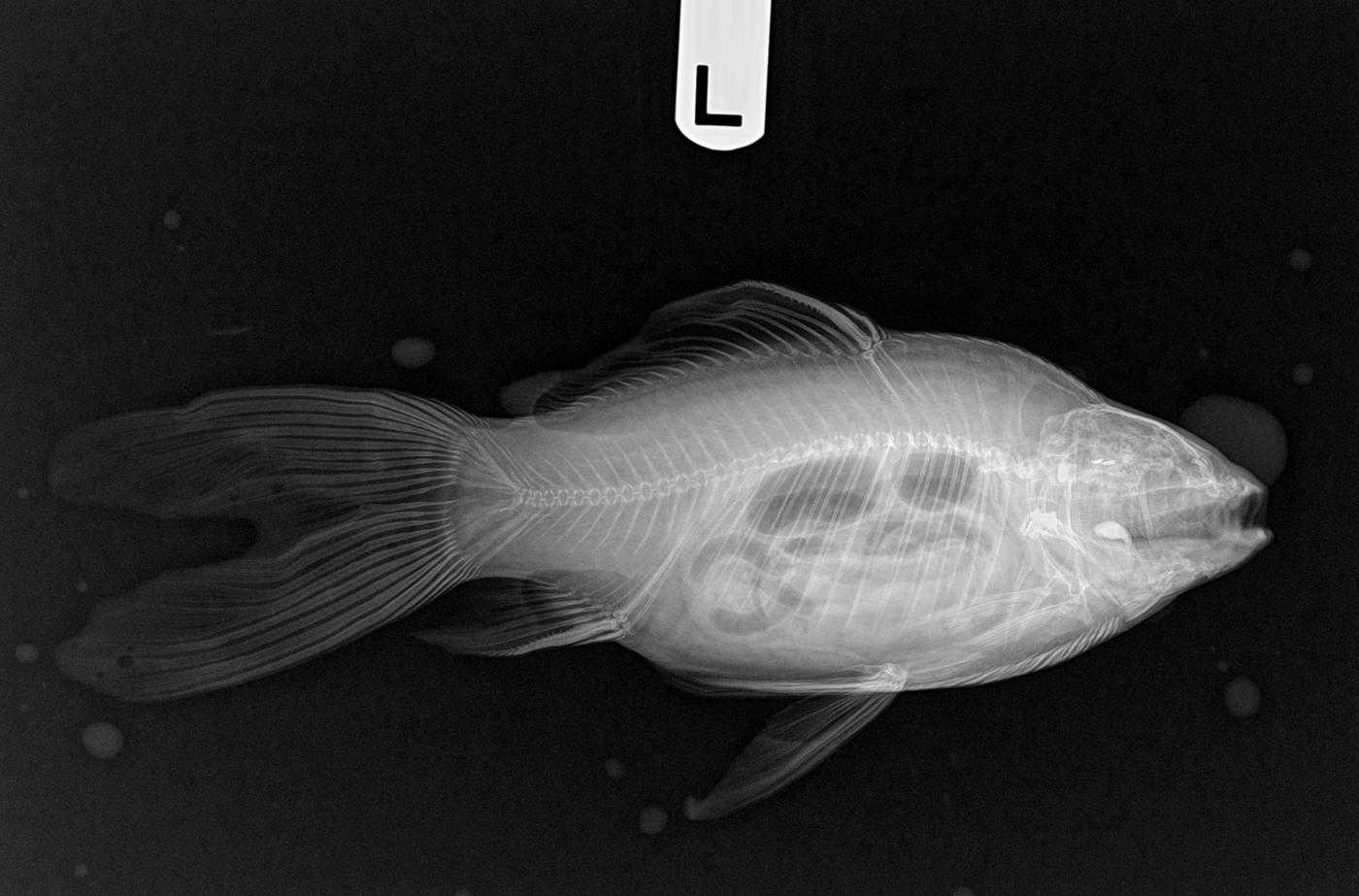
All fancy varieties of goldfish originally descended from the standard comet goldfish. Can you see how their anatomy has changed to suit their external appearance? Most notable is the swim bladder. Fish have internal air balloons called a swim bladder that helps them maintain neutral buoyancy. Most carp species, including koi and goldfish, have a cranial and caudal air sac. You may note in the fancy radiographs, they only have one or in Rusty’s case, one almost on top of the other. It is completely normal for fancy goldfish to only have one air bladder, and it may even appear over-inflated. This over-inflation is an adaptation to limited tail movement. These goldfish have been bred for beautiful external features, not room for normal internal anatomy and swimming behavior.
What is most apparent on Huxley’s radiographs is the shape of his spine. Not only does it take an odd “W”-shape appearance, but two vertebrae have luxated (red arrow) or possibly fractured.
Before presenting, although negatively buoyant, Huxley was able to maintain an upright position by using his tail as a kickstand. However, following these radiographs and a neurological exam, Huxley has lost function of his tail and therefore is resigned to stay on his side. His owner is very diligent and has switched his substrate for smooth glass beads that do not irritate Huxley’s skin or grow bacteria. Huxley still has a ravenous appetite and likes hanging out with Darwin.
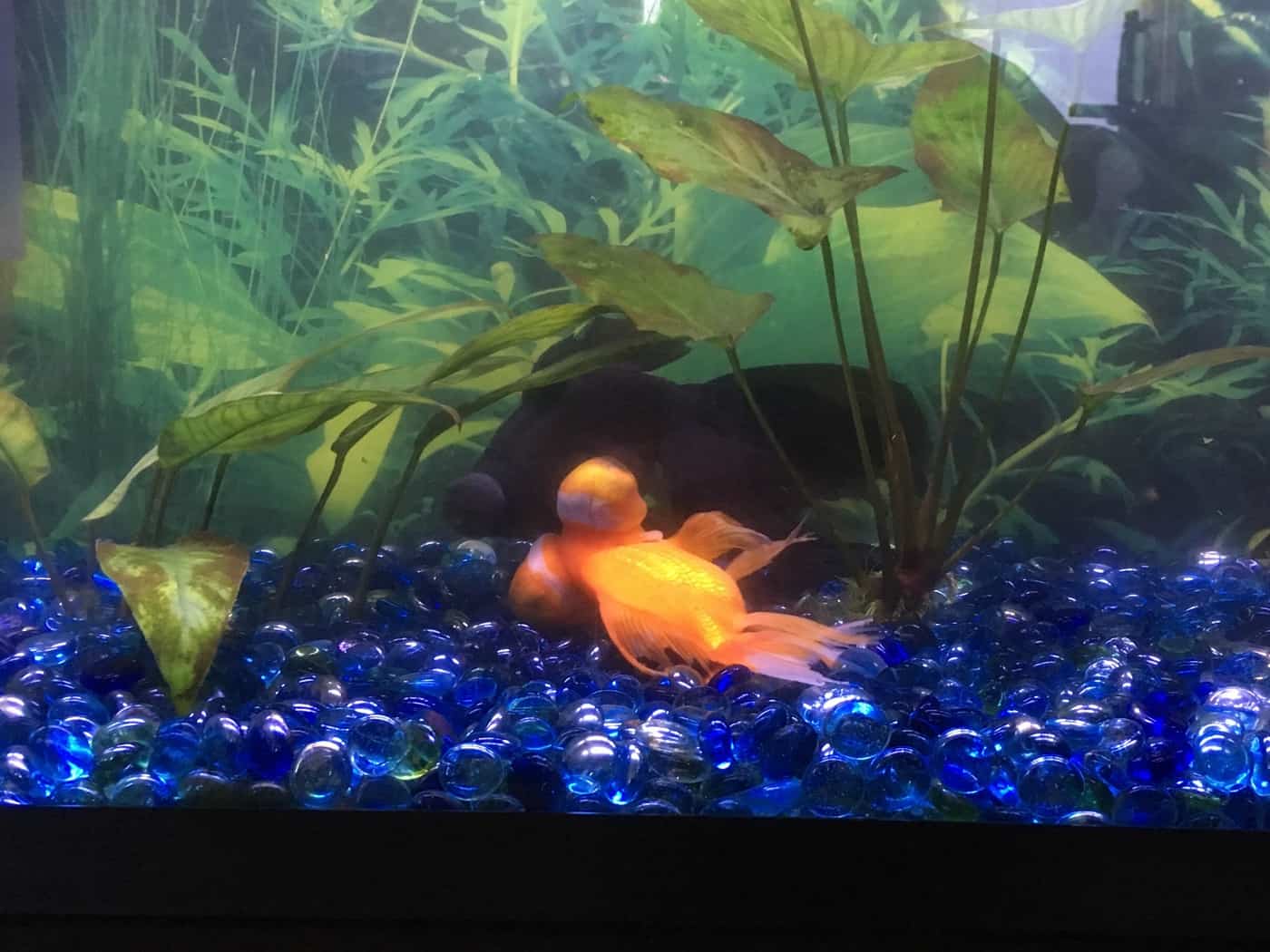
Fancy goldfish may be very beautiful, but their internal anatomy often causes secondary issues with buoyancy and visual disorders. Many of these bubble eye varieties will scar down from tiny tears. Internal anatomy limitations from external body features can cause swim bladder issues and affect buoyancy. When considering your next fish to adopt, remember that these fancy fish may be hiding a secret inside that may affect their livelihood as they grow bigger.

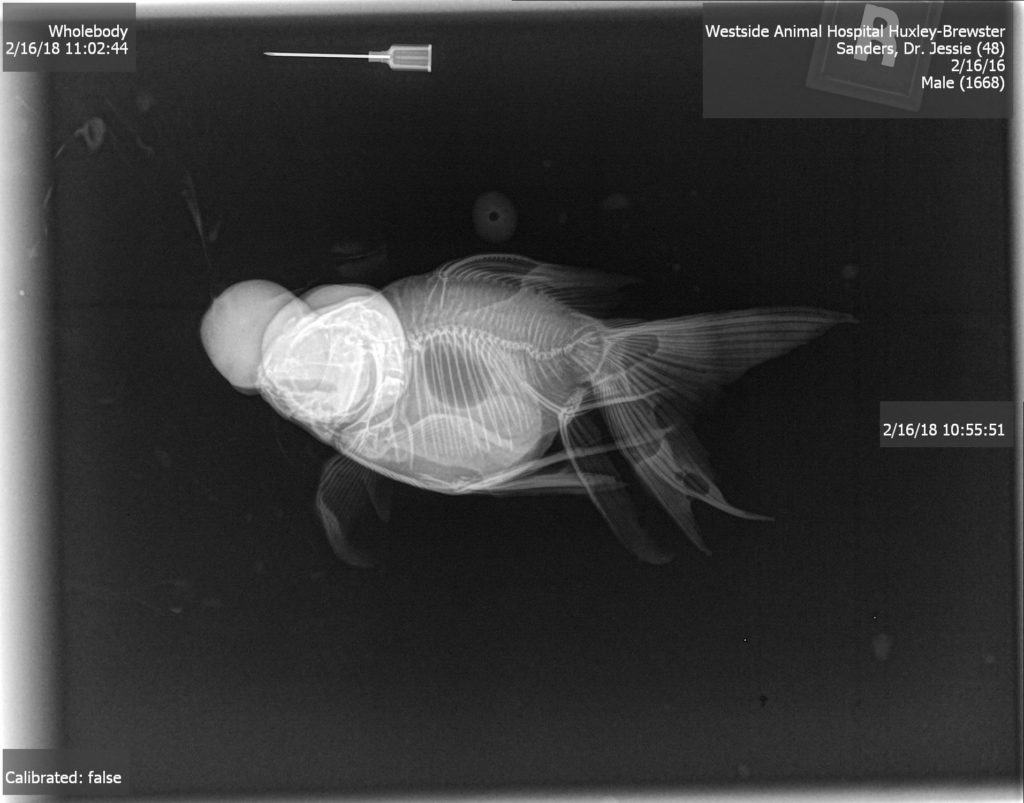
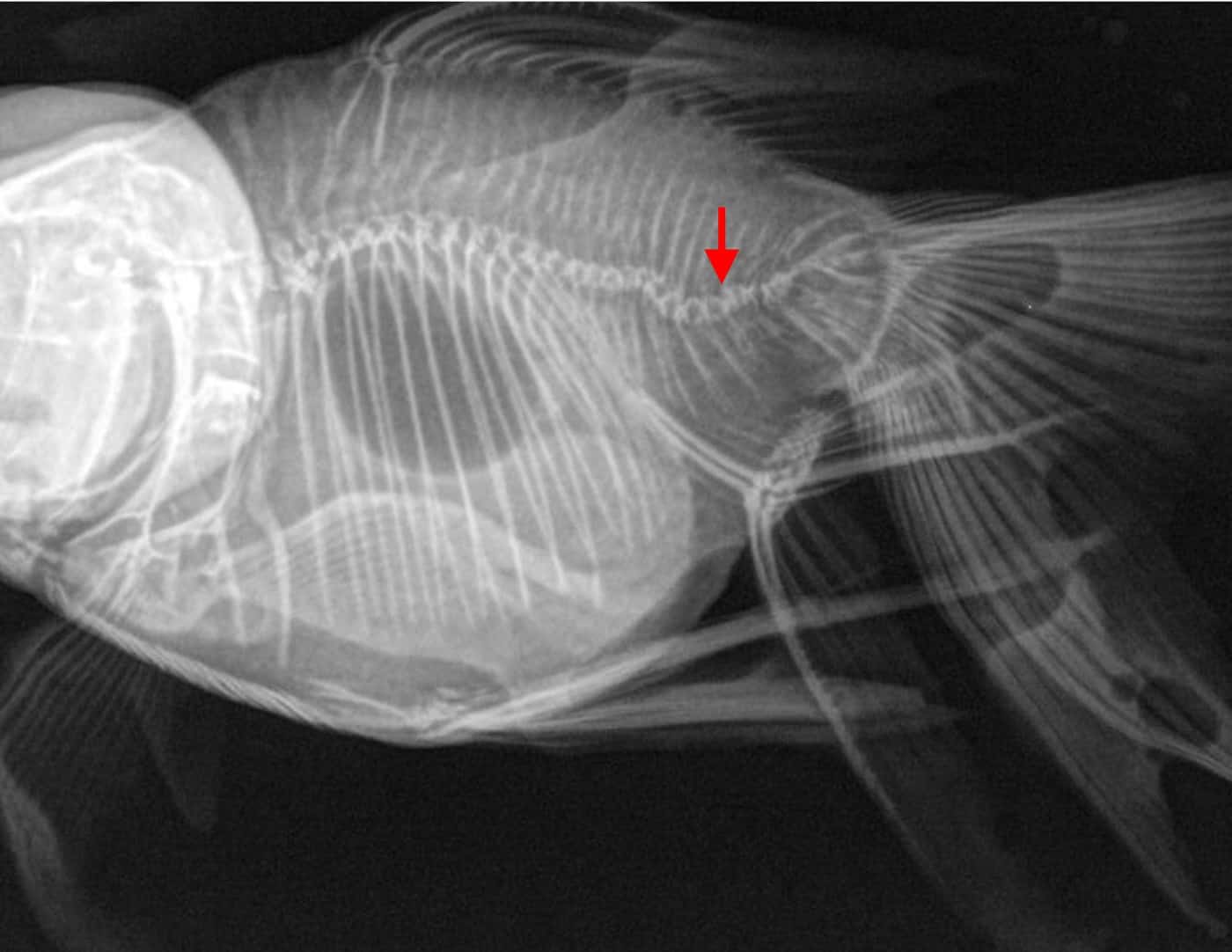
Pingback: How Many Fish Per Gallon? – Aquatic Veterinary Services
Pingback: Swim Bladder Disease – Aquatic Veterinary Services
My blue dwarf gouromi has a growth on his tail and it goes all the way through is there anything I can do for him?
For veterinary assistance, please call our office at (831) 278-1081 or fill out the appointment request: https://cafishvet.com/appointment/
Pingback: Fancy Goldfish Buoyancy Help - Aquatic Veterinary Services
Pingback: Swim Bladder Disease in Fish - Aquatic Veterinary Services
Pingback: Guppy Inbreeding - Aquatic Veterinary Services